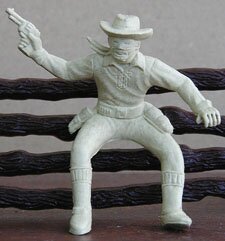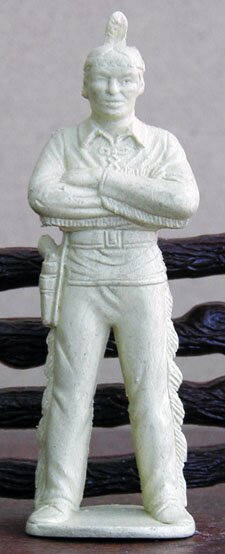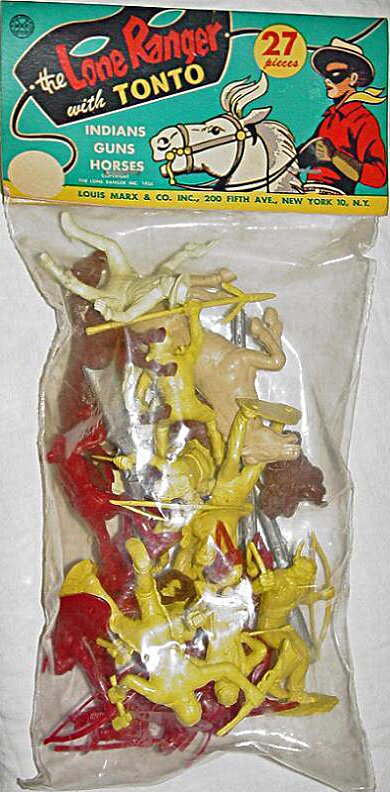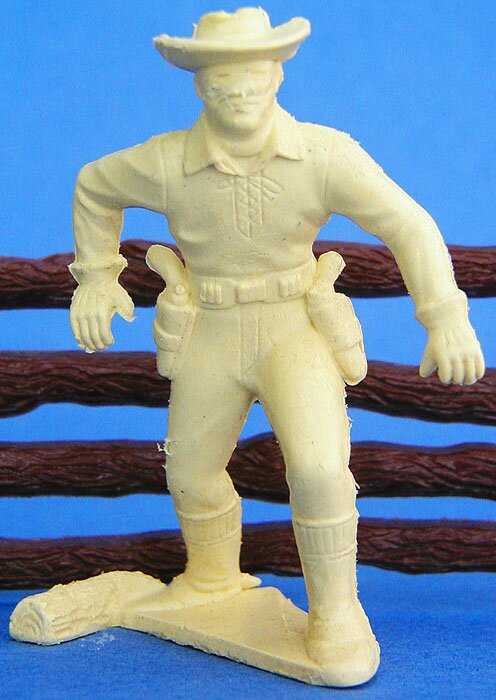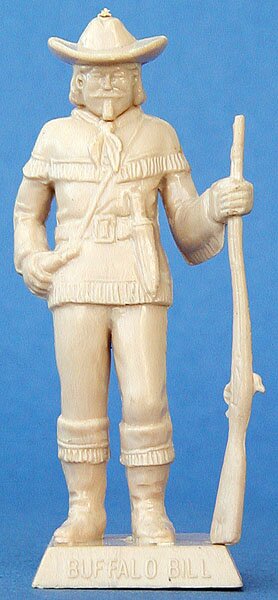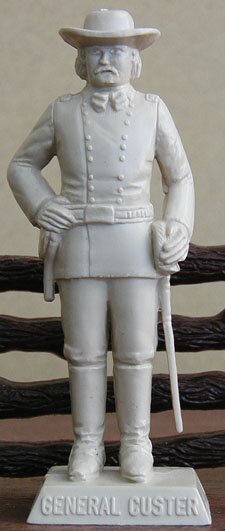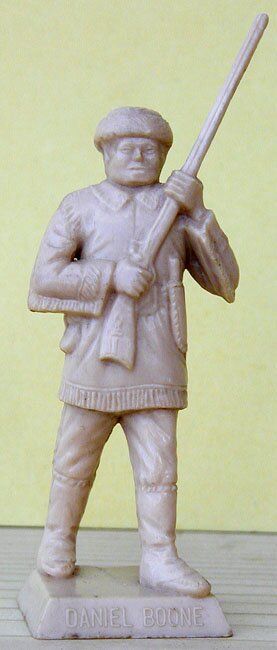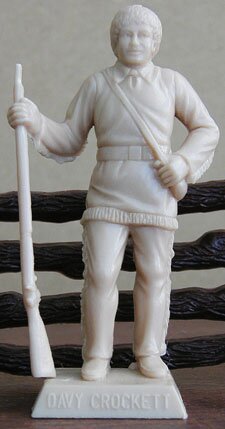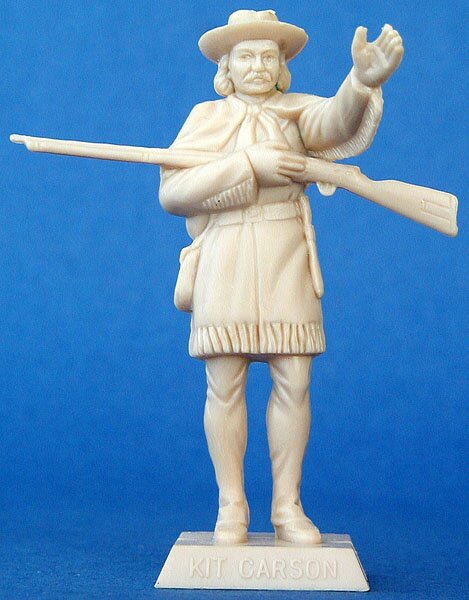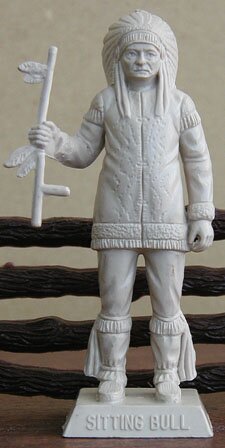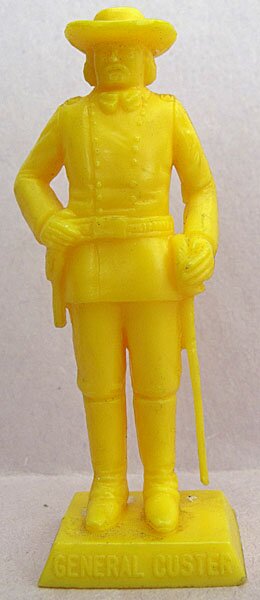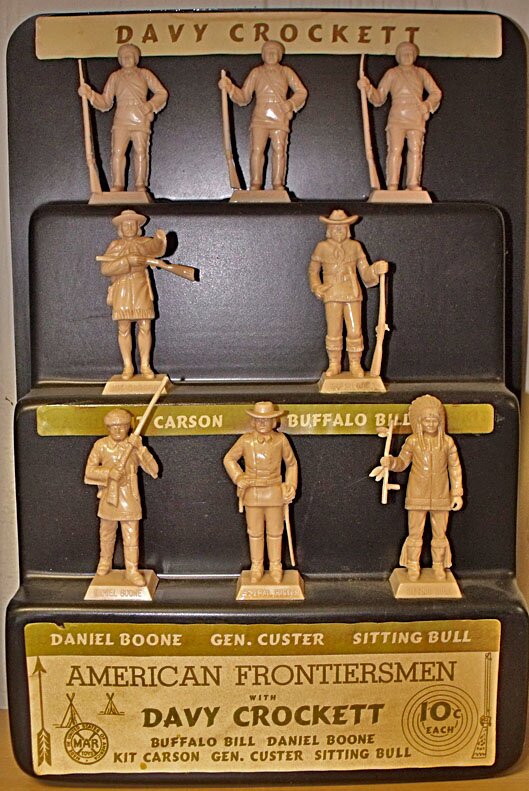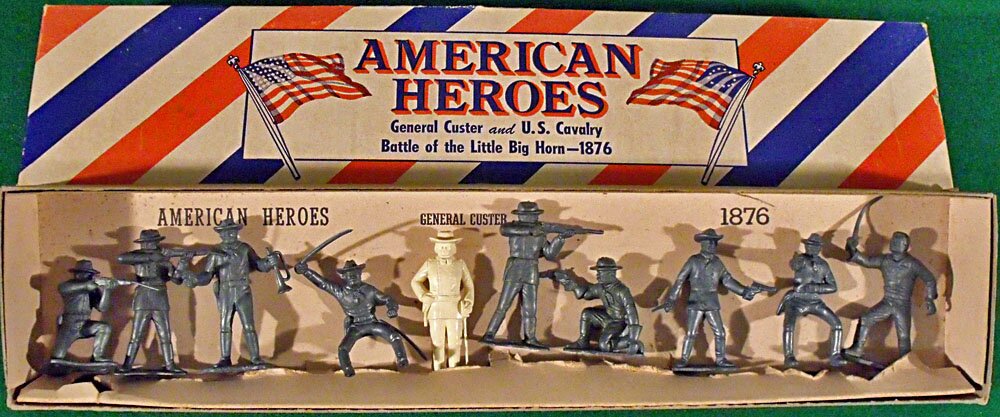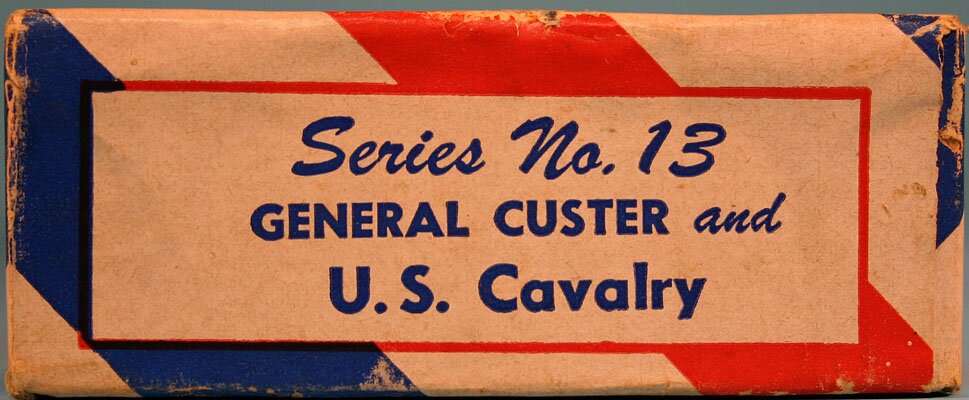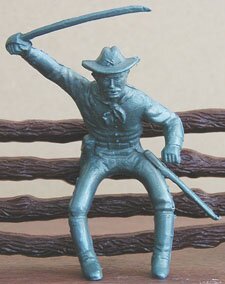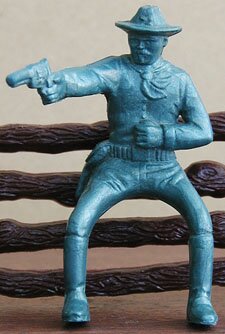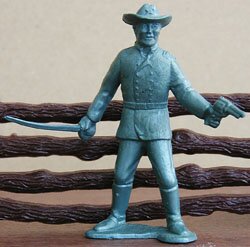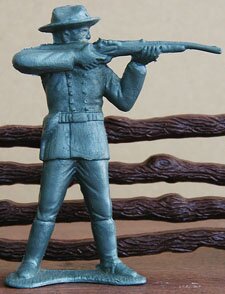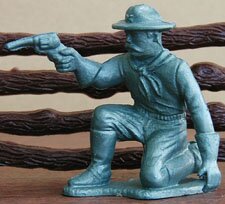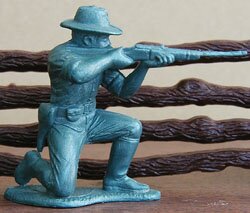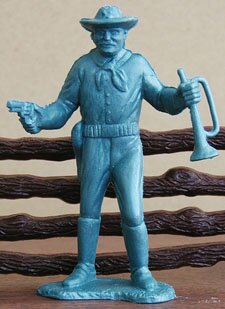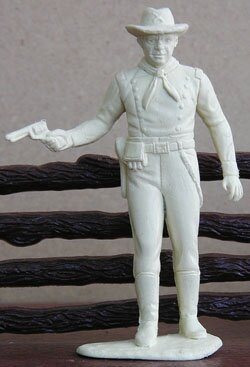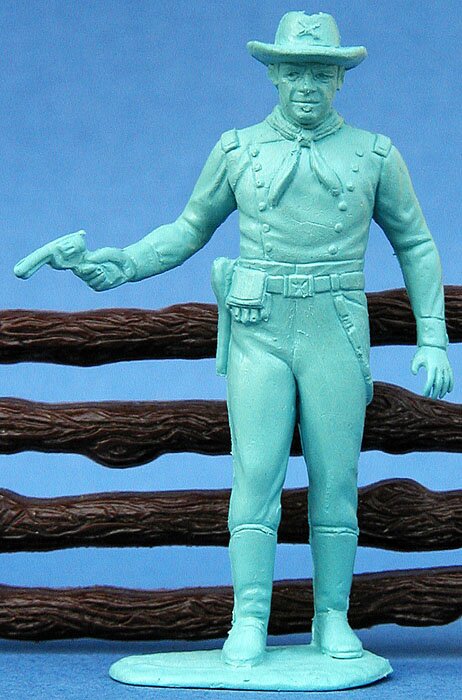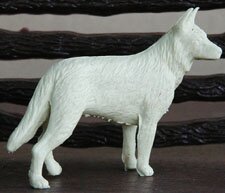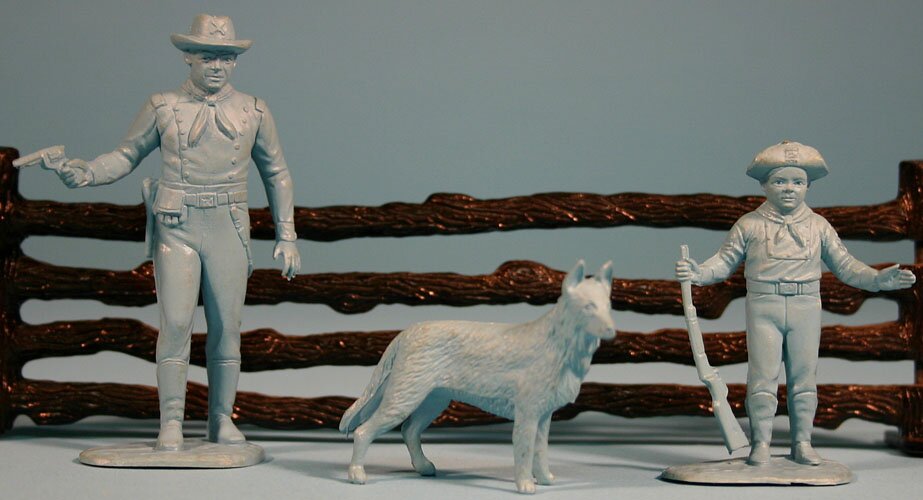Western Ranch Cowboys
PL-129
The first Marx playset I owned was a Marx Western Ranch Set. I vividly recall these early, block-like cowboys, as well as the cabin, horses, and many wild west accessories that came with them. Commonly called "Chubbies," these 60mm cowboys were not the tiny works of art that Marx created later. I've always called the walking cowboy (Pose 5 below) "Old Flatface," because the mold caused the right side of his head to look as if he had just been hit by a two-by-four. And has anyone ever held a lasso like the roping cowboys in this set (Poses 2 and 4)? However, I am sure that I spent many happy days with them, and I will always rue my failure to keep my set.
Marx produced these figures only in the early 1950s. The 16-cavity mold included two sets of the figures, but only one cowgirl (Pose 8) and one gunman (Pose 3), so contents were not the same in each playset. Marx reportedly reworked the mold several times, attempting to improve the primitive sculpting.
While Geppert's Guide states that these figures came in yellow, cream, white, and gray vinyl, you can find them in many shades of these and similar colors if you scour eBay or attend a few toy soldier shows. Be sure to clean them to find out what color they really are under all that dust and grime. I'm sure that Marx was experimenting with its figure colors in those early days, so that lots of interesting colors appeared in playsets!
The Western Ranch Sets included no Indians, no bad guys, none of the fighting Marx cowboys and cavalrymen that came later. As PFPC states, "This is the most peaceful set of wild west figures that Marx made."
My favorite? The Old Guitar Player, Pose 6. By the way, see the section on "Other Extremely Rare Figures" for a couple of more figures that infrequently were found with these Chubby cowboys.
I have never seen re-issues or copies of this group.
Click here to see horses related to these figures.
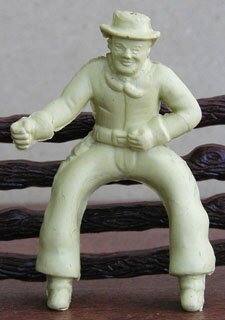 |
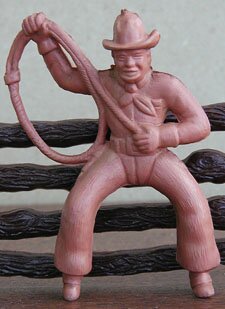 |
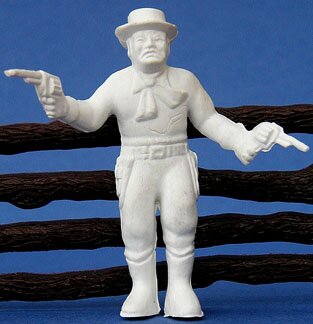 |
| 1. Mounted, right arm out | 2. Mounted, with lasso | 3. Standing, 2 pistols drawn |
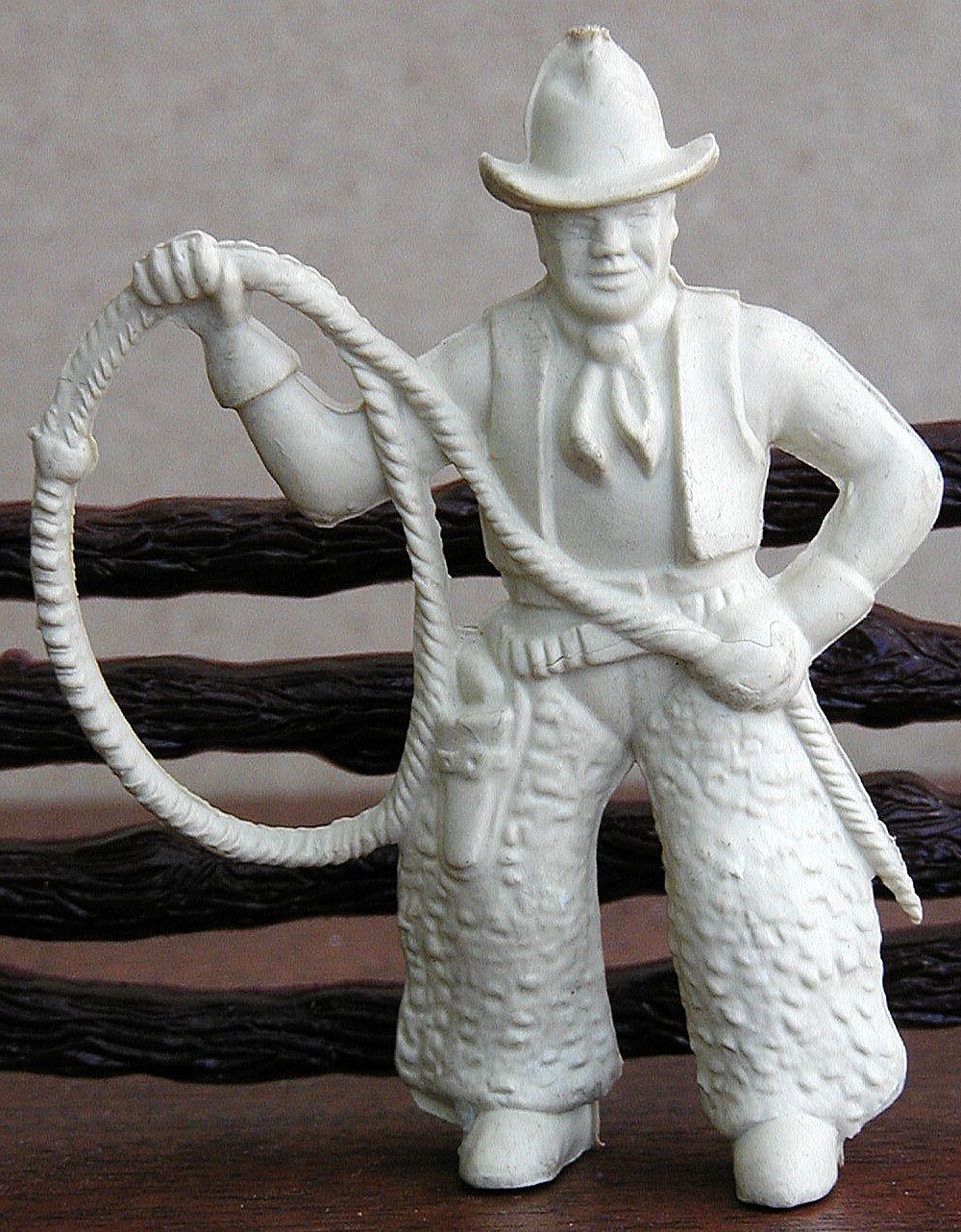 |
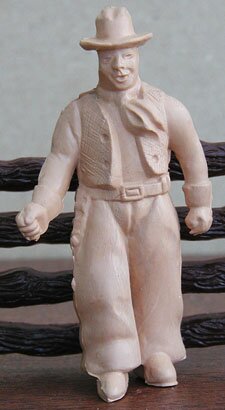 |
 |
| 4. Standing, with lasso | 5. Walking, arms at sides | 6. Sitting on box with guitar |
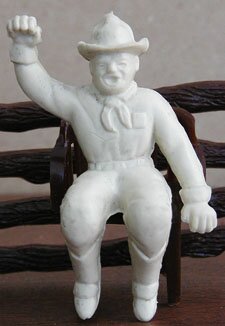 |
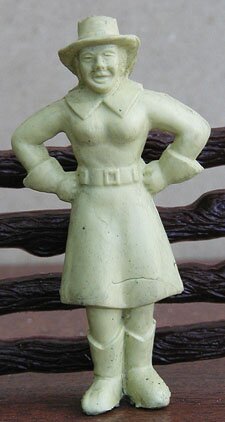 |
| 7. Sitting, waving | 8. Cowgirl, standing |

60mm Pioneers
PL-322
These rustic pioneers were the first figures that Marx created to defend Fort Apache. With the old 45mm Fort Apache frontiersmen cast aside, they were released in Fort Apache Playsets at Christmas 1953, to do battle with the Stockade Indians below. As the Indians continued multiplied (see the sections on Camp Indians and Skinny Indians below), the pioneers became quickly outmanned. Marx finally sent a relief force of 60mm cavalrymen to assist the pioneers in 1955.
These figures showed improvement in detail and realism from the Western Ranch cowboys. However, none of them initially had bases to help them stand, so most had difficulty remaining upright without support. With the exception of the pioneer woman (Pose 4), Marx added bases to the figures in 1954. At the same time, Marx completely redesigned the Advancing with Pistol (Pose 5 and 5R) and Running with Rifle (Poses 6 and 6R) poses. These two new, strikingly-detailed poses might be called Marx' first works of art in its wild west playset figures and are now among the most sought-after Marx wild west characters. Both versions of these two poses are pictured below. The two poses were actually revised twice, but the final change only added a larger base. I believe the revisions shown below are those with the larger bases.
The mold included three complete sets of the six poses. The pioneers were most commonly molded in cream, gray, and brown. Initially produced in vinyl, they were later made of soft plastic.
My favorite in this set is the revised Advancing with Pistol, but you have to admire the female re-loading the musket in the face of Indian attackers. What a woman!
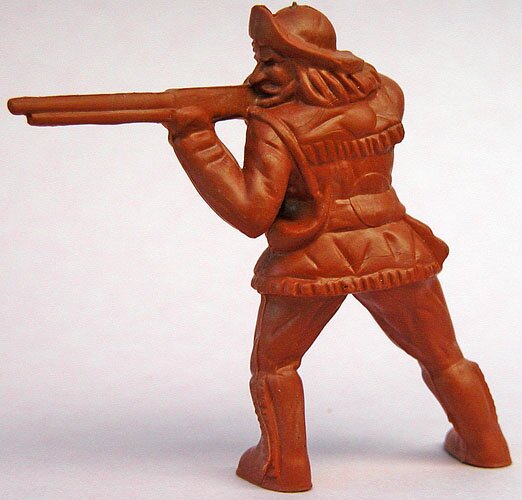 |
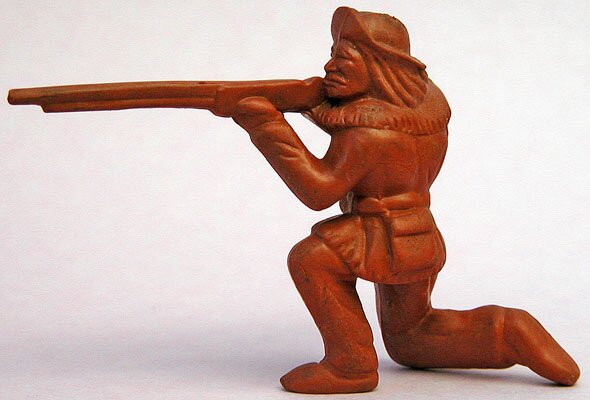 |
| 1. Standing, firing rifle | 2. Kneeling, firing rifle |
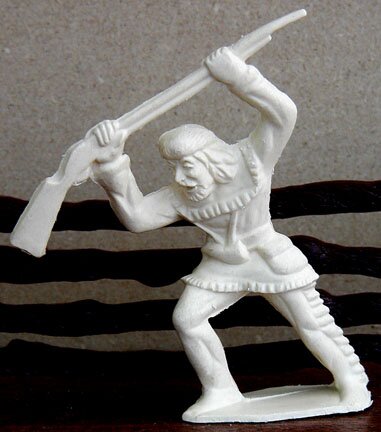 |
 |
| 3. Clubbing with rifle (with base) |
4. Woman reloading rifle |
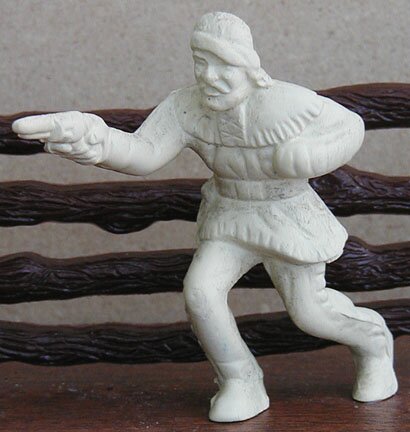 |
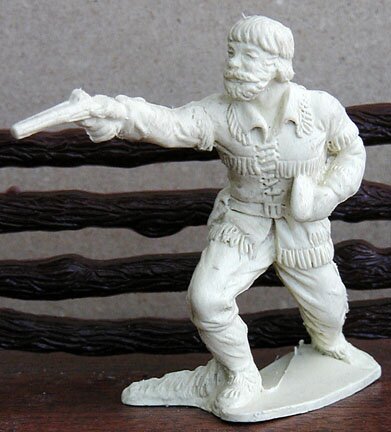 |
| 5. Advancing, firing pistol | 5R. Advancing, revised |
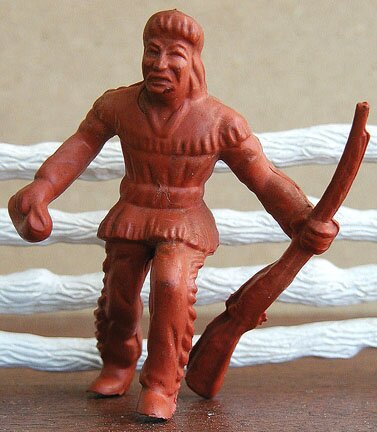 |
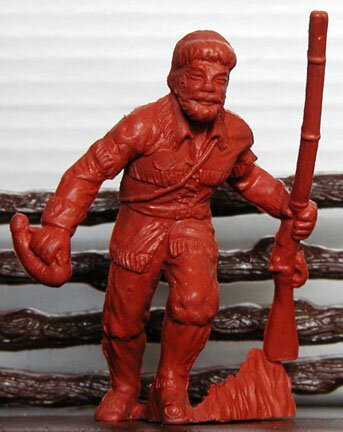 |
| 6. Running, with rifle | 6R. Running, revised |

Stockade Indians
PL-310
This set of Indian warriors was the first of three 60mm Indian sets released by Marx in 1953 and 1954. This first set was was a companion piece to the 60mm pioneer set above, also initially released in Fort Apache playsets at Christmas 1953. These were the first Indians sculpted specifically for Fort Apache and remained with the playset until Marx began to replace the 60mm figures with 54mm figures. The quality of the figures is similar to the 60mm pioneers, though the crawling Indian (Pose 6) invariably has an ugly mold line down the center of his face. Also like the pioneers, the Indians were first issued with no bases, but Marx soon re-issued the three standing figures with bases. Marx made no other changes to the set.
The mold included three complete sets of the six poses. Figures were initially made in vinyl and later in soft plastic, with the bases added to many of the plastic ones. The most common colors used for the Indians were red brown, yellow, and gray. However, they also can be found in several other colors, including my preference of red. I have also seen some in dark green.
It's hard to pick a favorite among these six figures, but I suppose it would have to be the mounted Indian holding his rifle aloft and weilding a knife in his left hand. To me, he appears to be delivering a pep talk prior to the battle.
Click here to see horses related to these figures.
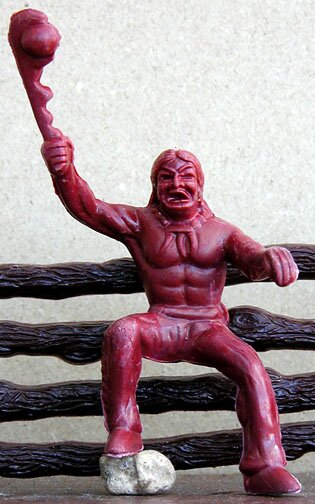 |
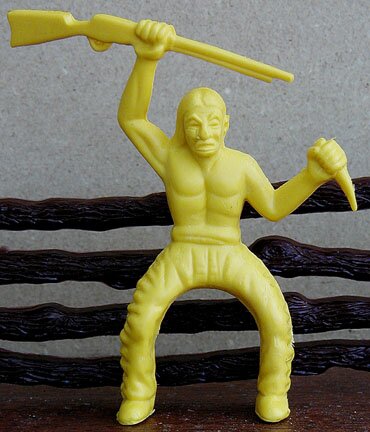 |
|
1. Climbing ladder or mounted,
with club
|
2. Mounted, with rifle |
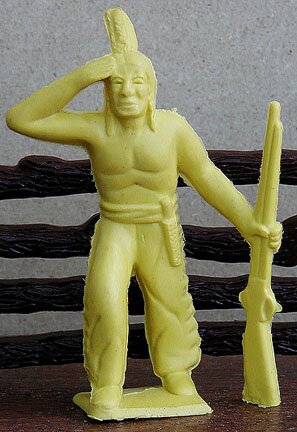 |
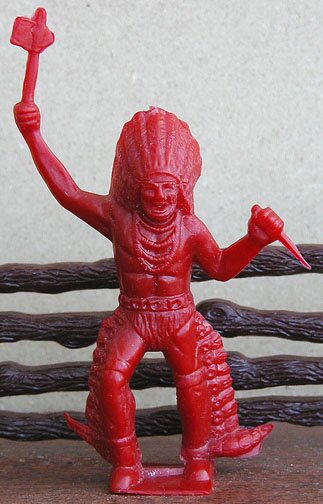 |
| 3. Standing scout (with base) |
4. Standing, tomahawk raised (with base) |
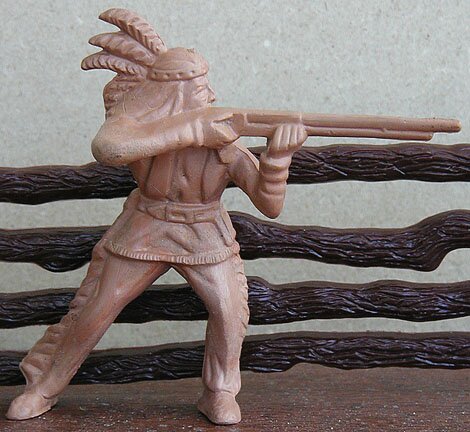 |
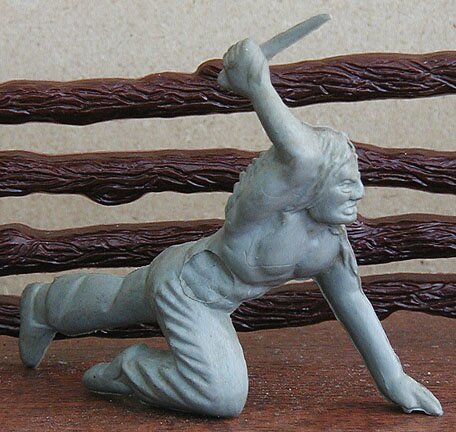 |
| 5. Standing, firing rifle | 6. Crawling |

Camp Indians
PL-390
Also included in the Christmas 1953 Fort Apache Playsets, the Camp Indian set included two sitting chiefs, a dancing medicine man, three squaws, and two bowmen. This second group of 60mm Indians was sculpted with slightly more detail than the Stockade Indian set.
The mold included two complete sets of the eight poses. Figures were initially made in vinyl and later in soft plastic, with bases added to many of the plastic ones. They were produced in colors similar to the Stockade Indians in the previous section.
The two bowmen seem somewhat out of place among the other more peaceful-looking figures in this set and would perhaps better fit with the warriors of the Stockade Indian set. On the other hand, perhaps they are simply getting in some target practice.
The sitting chiefs (Poses 1 and 2) have to be my favorite of the bunch. It's too bad that Marx did not make more Indians in domestic poses. Of course, I doubt that we kids would have been too excited to buy them; like today's kids, we wanted to be where the action was!
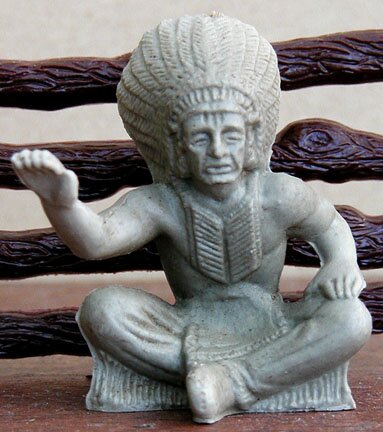 |
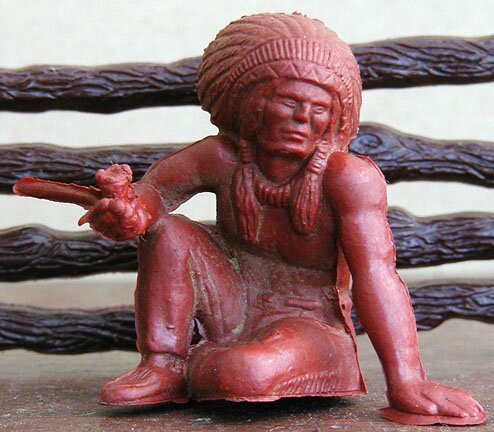 |
| 1. Chief, sitting, arm raised | 2. Chief, sitting with pipe |
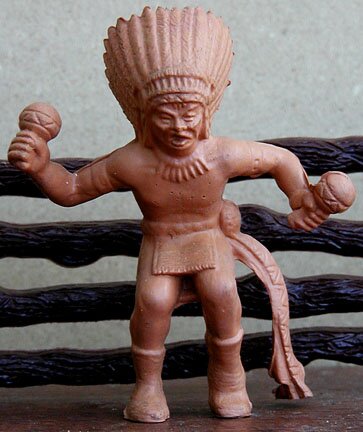 |
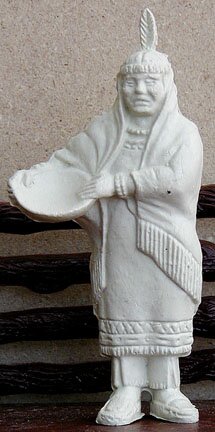 |
| 3. Dancing | 4. Old squaw with bowl |
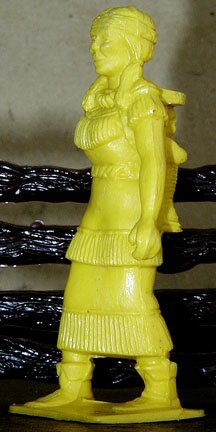 |
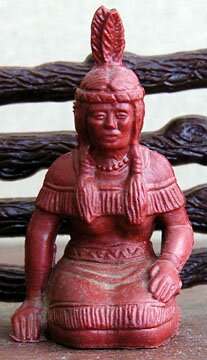 |
| 5. Squaw with papoose (with base) |
6. Sitting squaw |
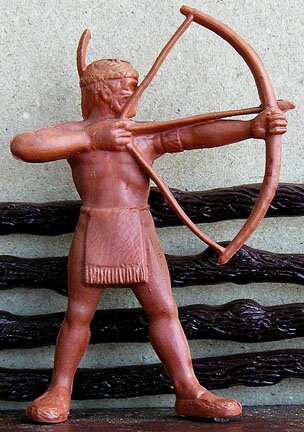 |
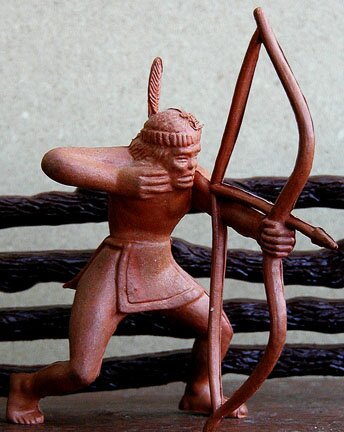 |
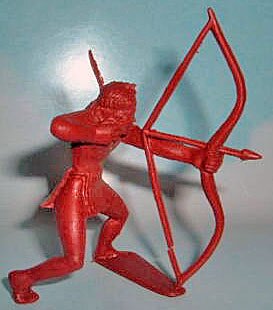 |
| 7. Archer, standing | 8. Archer, crouching | Pose 8 with base added Photo courtesy of Rick Koch, Ebay ID toy-hood. This pose is not often seen with base. |

Skinny or Slim Indians
PL-591
This was the third and last set of 60mm Indians released by Marx for its Fort Apache Playsets. They were first included in Fort Apache playsets in 1954. The sculpting quality and detail is markedly improved from the first two sets of 60mm Indians, and, as a result, this is one of my favorite figure groups. I think the quality of these figures is further emphasized by the larger 60mm scale. The difference from 45mm anb 54mm scales may not seem like a lot...until you stand the figures side by side!
The mold included two complete sets of the eight poses, and the figures came in colors similar to the Stockade Indians described above.
The mysetery of this set is the Indian Shot with Arrow (Pose 10). A similar pose was later made in 54mm scale (see PL- 787 on page 3). The obvious question, of course, is, "If the Indians are fighting the cavalry, who shot the Indian with an arrow?" The answer -- according to Frank Rice, Chief Designer of Marx playsets -- is that he was hit by friendly fire! To keep up in the toy business, Marx had to think ahead, and one playset that Mr. Rice had high on his list was the forthcoming Custer and Battle of Little Bighorn. He recalled a painting that depicted Indians who had surrounded a group of cavalrymen, firing into and across the circle of soldiers. In the confusion of battle, an arrow had apparently passed through the circle and struck an Indian. So this pose is perfect for the disaster of Little Big Horn. The 54mm pose was in some Wagon Train playsets (who can forget the dreaded call, "Circle the wagons!") and eventually found its way to its intended home in the 1963 Custer playset.
The mounted Indian with raised spear (Pose 1) is my favorite pose in the set, but I think the kneeling archer who has just released his arrow (Pose 6) is perhaps Marx' finest 60mm Indian figure. Both can surely be called works of art, in my opinion.
Click here to see horses related to these figures.
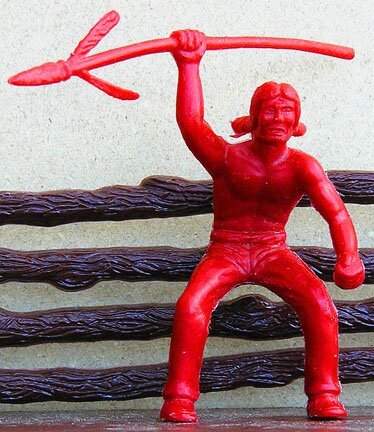 |
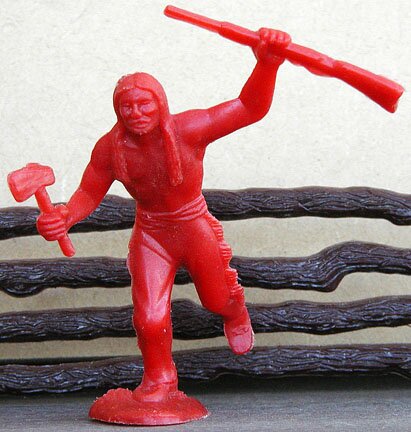 |
| 1. Mounted, lance raised | 2. Running, rifle raised |
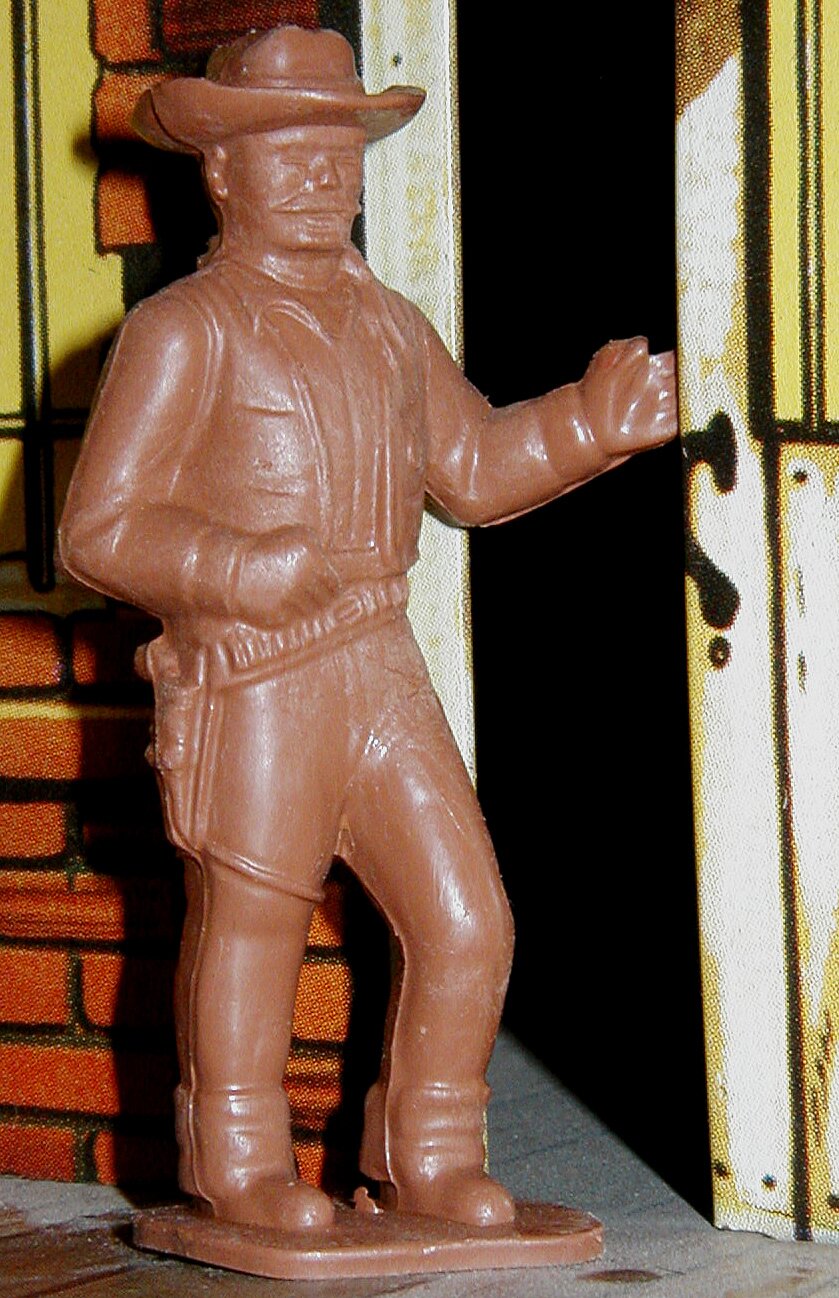
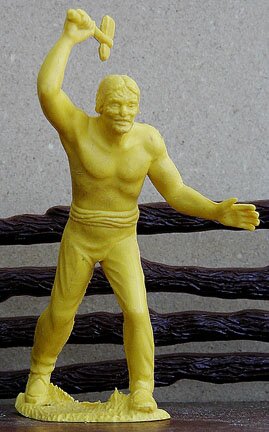
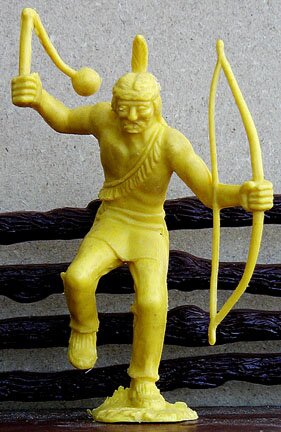
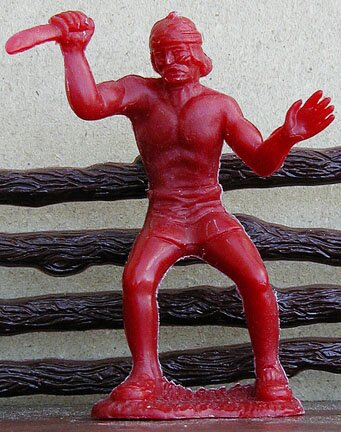
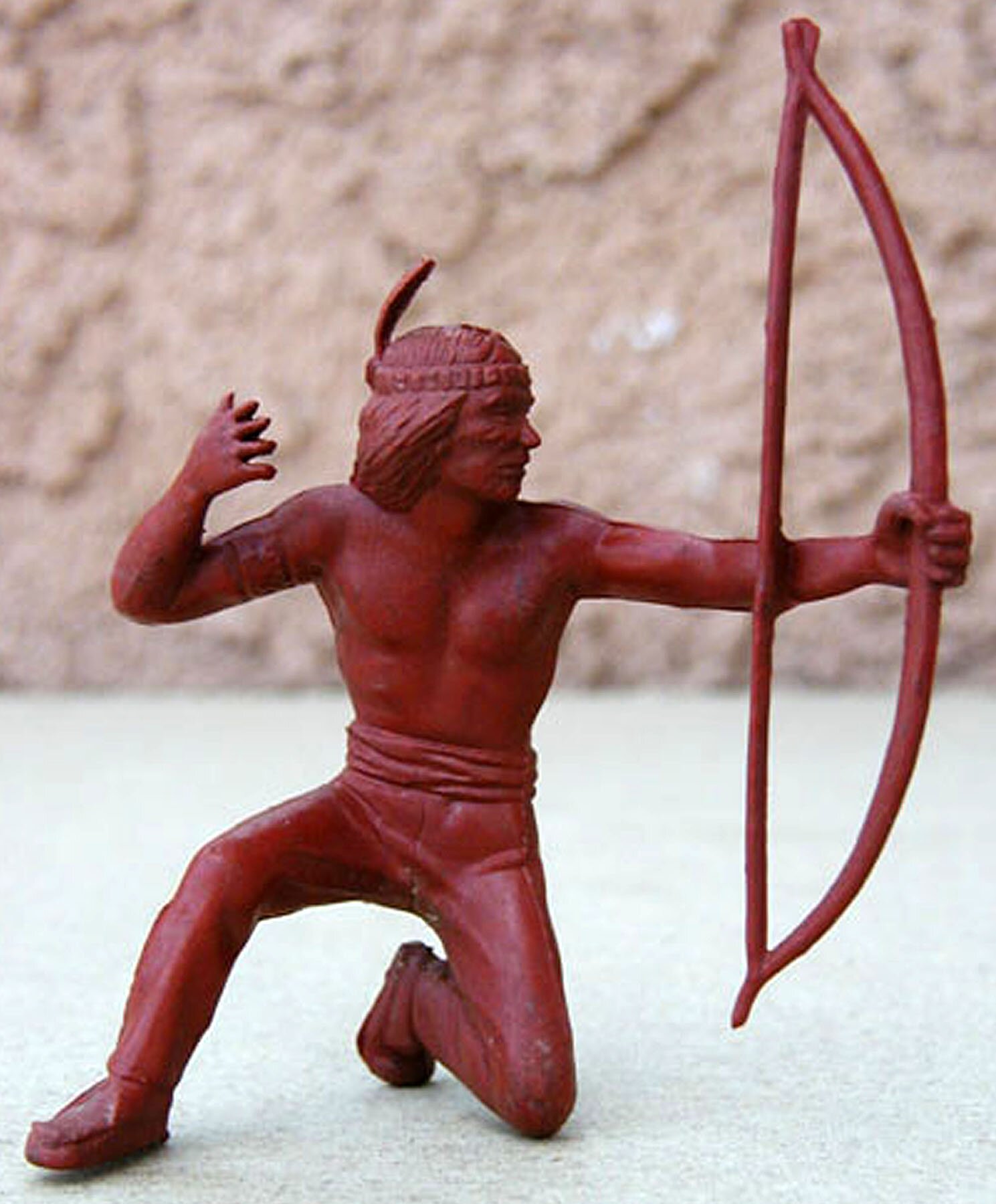
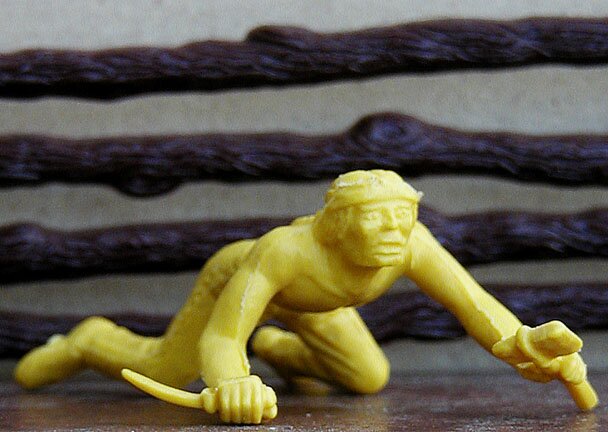
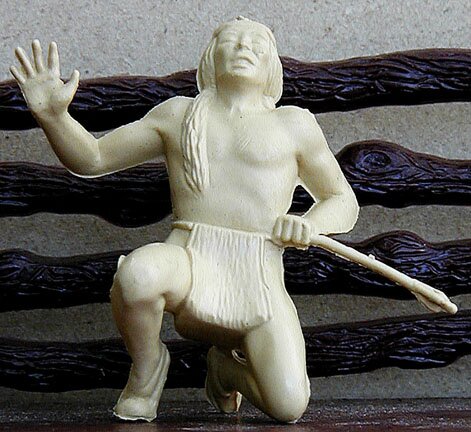

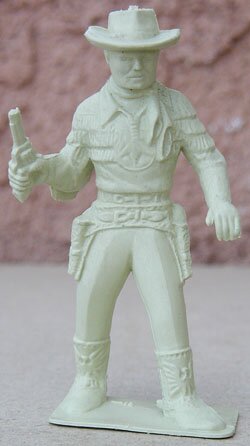
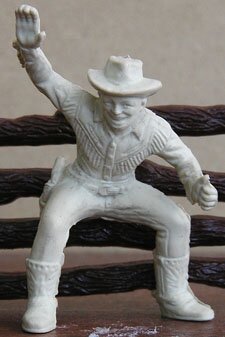
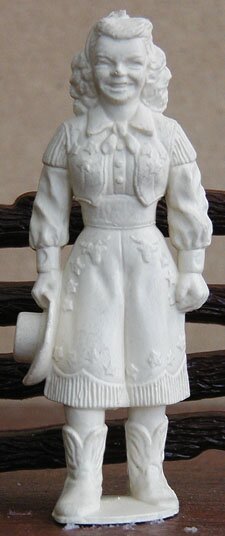
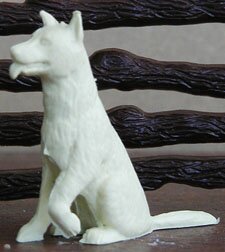
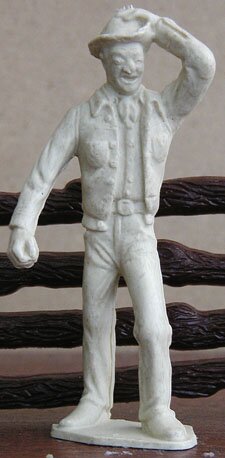
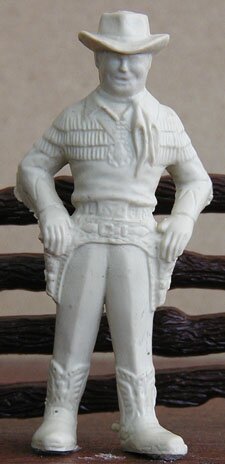

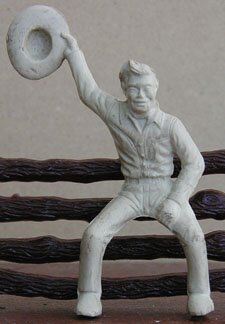
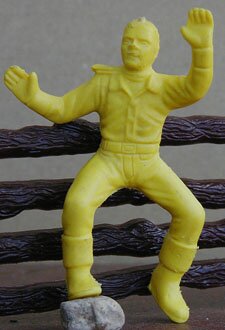
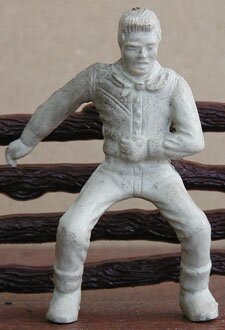
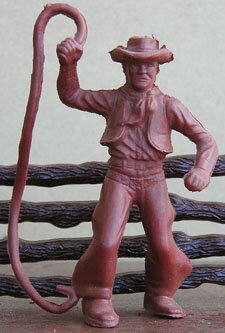
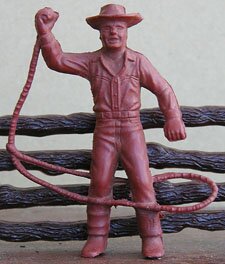
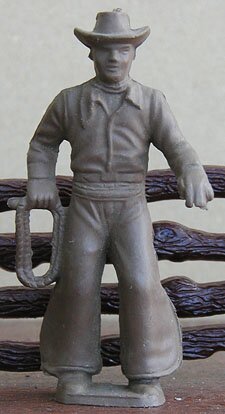
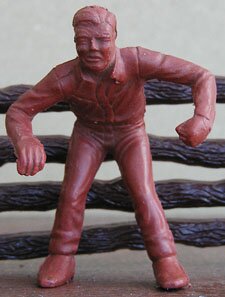
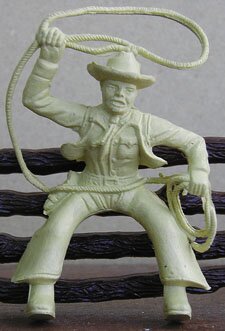
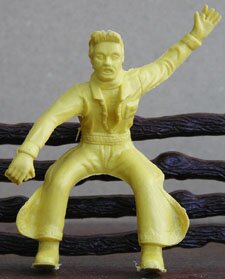
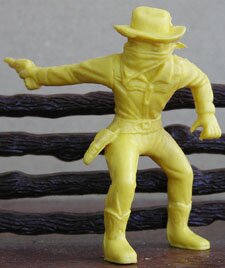
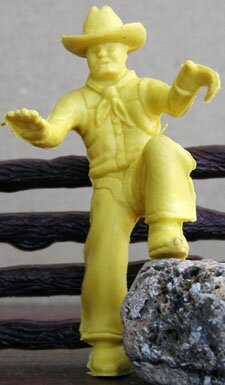
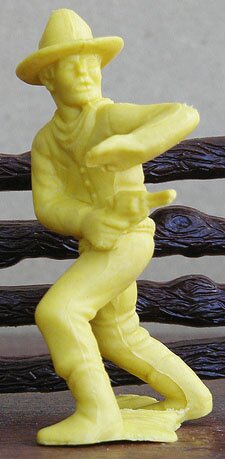
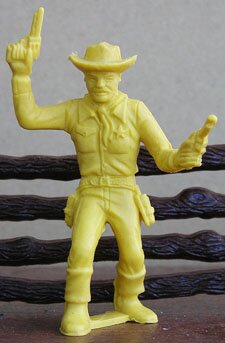
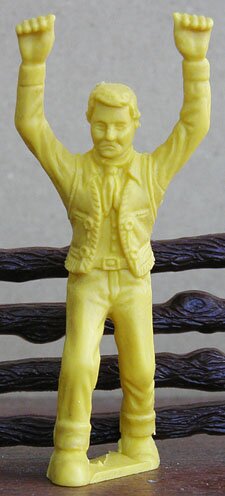
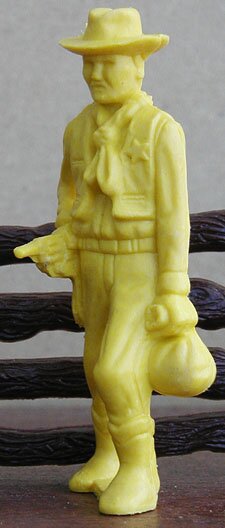
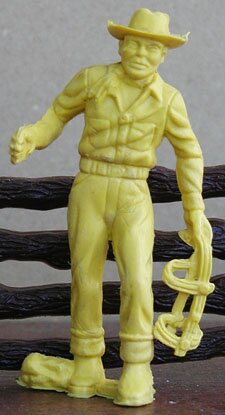
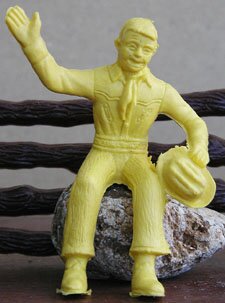
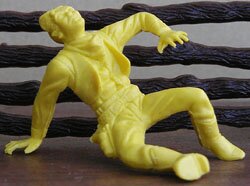

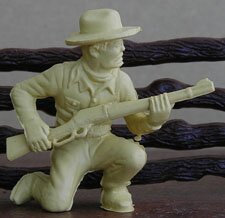
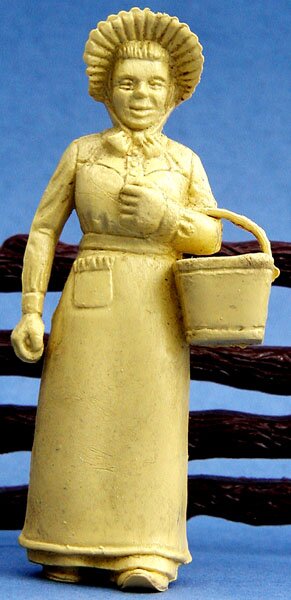
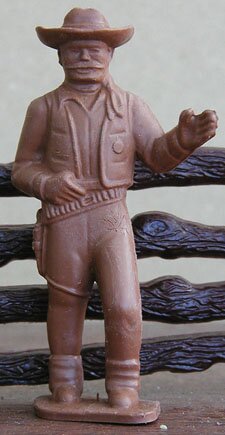
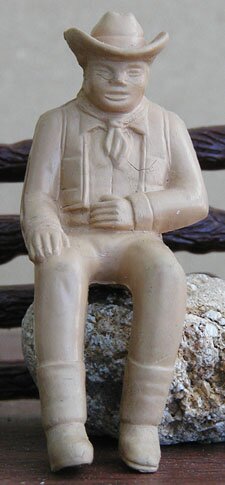
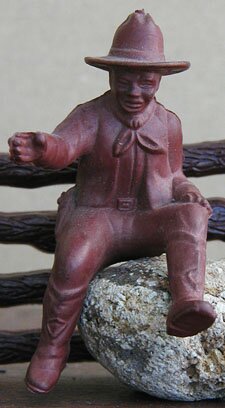
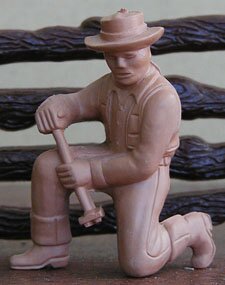
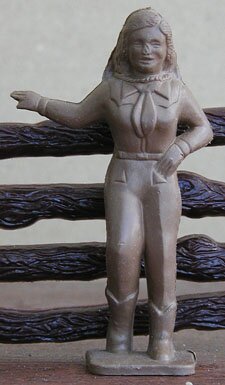
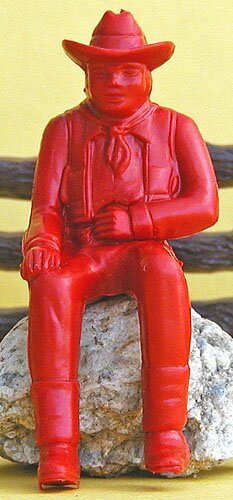

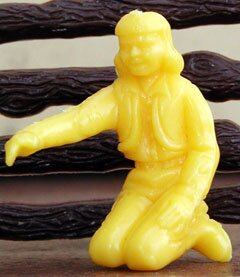
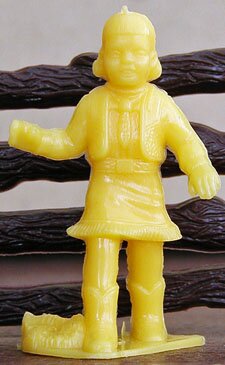
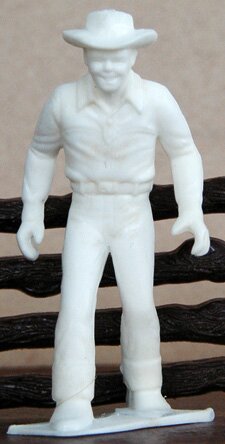


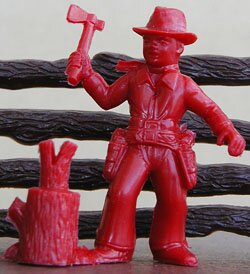
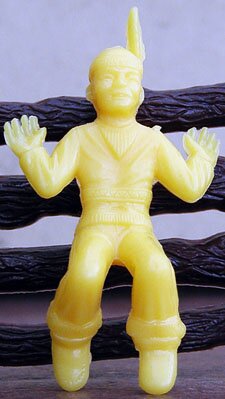
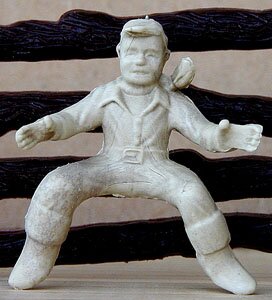
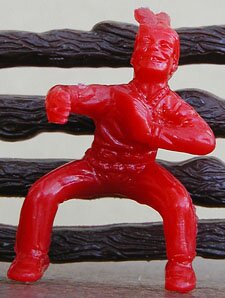
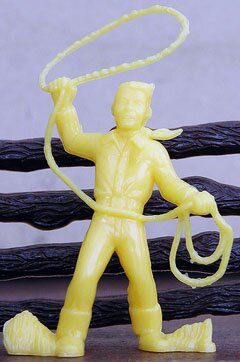
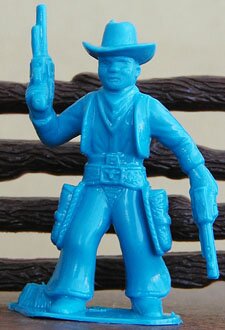
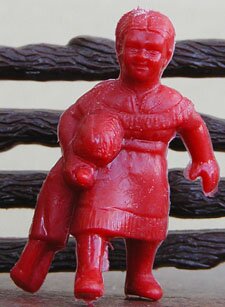
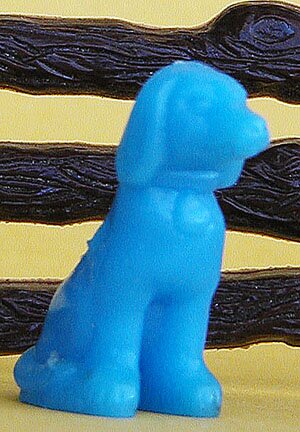
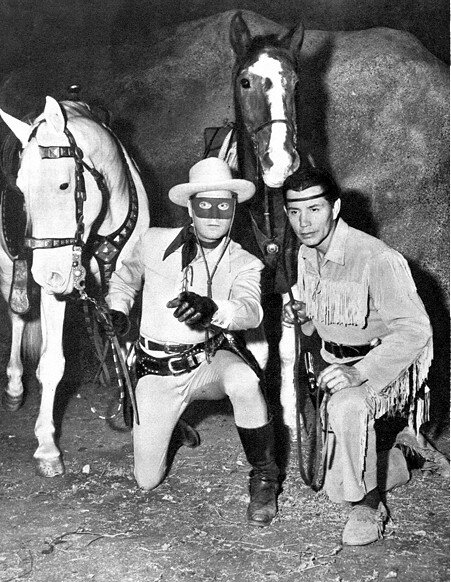
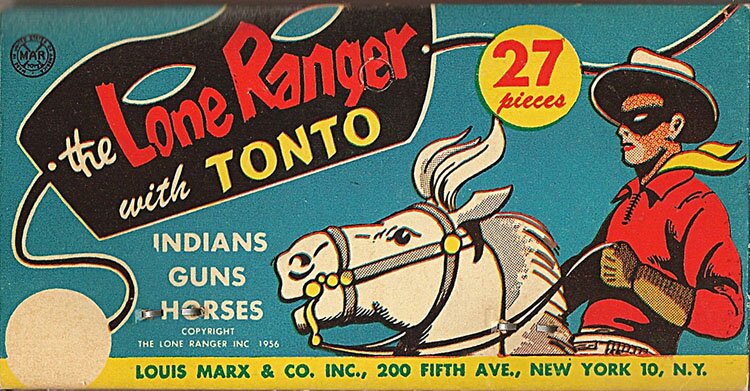 In 1952, shortly after releasing the Roy Rogers Rodeo Play Set, Marx released the Lone Ranger Rodeo Play Set, which resembled the Roy Rogers set right down to the front gate with only the name and color changed. The set included 60mm character figures of both the Lone Ranger and Tonto. Five years later, when the company converted its playset figures from 60mm to the smaller 54mm scale, the company produced a similar playset titled the Lone Ranger Ranch using the smaller cowboys, but with the same 60mm scale Lone Ranger and Tonto.
In 1952, shortly after releasing the Roy Rogers Rodeo Play Set, Marx released the Lone Ranger Rodeo Play Set, which resembled the Roy Rogers set right down to the front gate with only the name and color changed. The set included 60mm character figures of both the Lone Ranger and Tonto. Five years later, when the company converted its playset figures from 60mm to the smaller 54mm scale, the company produced a similar playset titled the Lone Ranger Ranch using the smaller cowboys, but with the same 60mm scale Lone Ranger and Tonto.